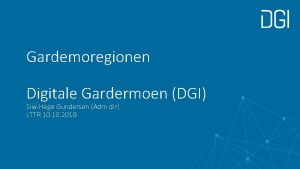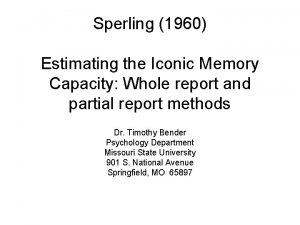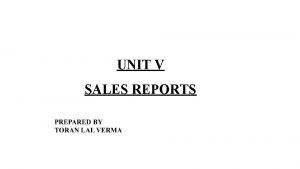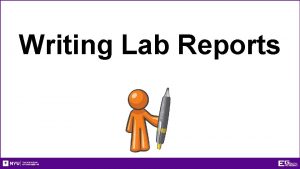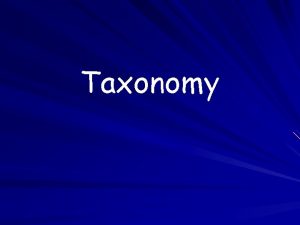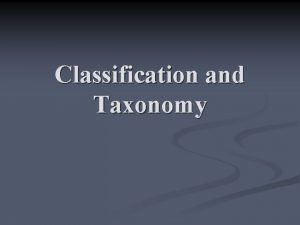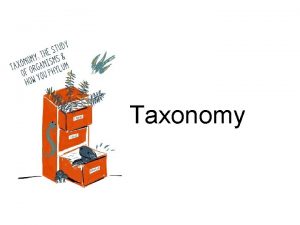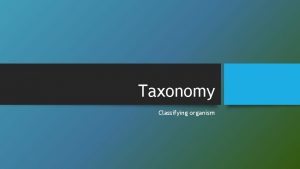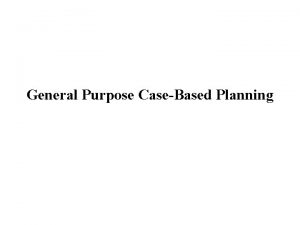DGI taxonomy A general purpose taxonomy to report
















- Slides: 16


DGI taxonomy • A general purpose taxonomy to report business data 2 2

DGI Taxonomy description • Supportive taxonomy that provides elements to identify the informing unit and the circumstances that define the context in which the XBRL instance is developed. – Version 1. 0, march 2005, was used by IPP taxonomy from the Spanish Stock Exchange Market Commission. – Version 2. 0 released in april 2006 • • The linkbase of jurisdictional references was provided by the Mercantile Register for those elements that required it due to their nature, reinforcing the legal structure in which DGI was developed. DGI might be a model for other countries as the Latin Americans ones. 3 3

Objectives: • • • Build a taxonomy for everybody. Result of the interaction of public and private institutions: Bank of Spain, Spanish Stock Exchange Market Commission, Mercantile Register, National Statistics Institute, Tax Agency, Informa, Software AG, Fujitsu, Soluziona and Pw. C. Design a taxonomy to cover every need. Modular structure based in the agrupation by contents, with an addition of a basic or extended agroupation where required. Follow the development of GCD. DGI is broader than GCD that currently remains as a draft. 4 4

Problems while developing the taxonomy. • Problem • Solution Reaching an agreement in the contents of the dictionary. Dictionary with all the data with perspective of usage • Problem Lack of a legal or formal predefined schema in the contents of the modules as well as the different points of view. • Solution Definition of basic and extended modules according to the level of detail. • Problem Solution Long run manteinance of the values included in the different code lists used. Division, for tracking effects, of the contents of code lists. 5 5

DGI structure 6 6

ELEMENTARY • A small module for a wide use • Only 10 “string” type elements: Entity name, Identification code, addres, province, locality name, zip postal code, e-mail, contact person and document description. • To use DGI under every circumstance. 7 7

GENERAL BASIC • General identification data of the entity • • • Legal name Identification code Address Types of comunication Empowered person … 8 8

GENERAL EXTENDED • Includes the General Basic Module • General legal characteristics • • • Stock exchange market information Origin of the entity Subscribed capital Special situations. … 9 9

ECONOMIC ACTIVITY • ECONOMIC ACTIVITY BASIC • Description of principal operations and activities • Trading activities – Imports, exports – Percentage net turnover • Employment data : – Full / part time – Gender • ECONOMIC ACTIVITY EXTENDED • Same basic economic information applied to local units like branche offices, storage centers, etc. 10 10

INSTANCE DOCUMENT DATA • Descriptive elements of the XBRL report: • • Identification / description of the document Date Contact address Information about the accounting period. • … 11 11

THIRD PARTY RELATIONS • • • Parent entity Shareholding percentage Ownership structure Business combination types … 12 12

General Purpose Tuples and Code Item Types • GENERAL PURPOSE TUPLES General structures frecuently used by the main modules: Entity name Identifier Contact Person Country status … • CODE ITEM TYPES Module for internal use. Contains the technical characteristics and restrictions of the different elements that make operative the other modules. 13 13

NATIONAL CODE LISTS • Legal forms • Activity type • Region • Trading activity • Issuing Entity • Adress type • Legal name • Type of local unit • Status • Type of Domain • Identifier • Type of relation with the • Additional contact person • Entity origin • Quotation type XBRL instance • Type of shareholder with significant participation • Market identifier • Consolidation method • Route • Type of financial entity • Special situations 14 14

International and activity code lists • INTERNATIONAL CODE LISTS • • • Country Types of Communication Types of web sites Adress format Language • ACTIVITY CODE LISTS • SIC • NACE • IAE 15 15

THANK YOU FOR YOUR ATTENTION For more information about the DGI taxonomy : http: //www. xbrl. org. es/informacion/dgi. html Please note that there is a linkbase of labels in english and spanish (see the excel presentation file of the taxonomy). If you have some dubts or suggestion please contact by e-mail to: dgi@xbrl. org. es 16 16
 Specific purpose statement
Specific purpose statement Dgi adfærdskort
Dgi adfærdskort Dgi krocket sydvest
Dgi krocket sydvest Tjenesteintegrator
Tjenesteintegrator Mit dgi
Mit dgi Dgi gardermoen
Dgi gardermoen Dgi midtjylland
Dgi midtjylland The new taxonomy
The new taxonomy Status progress report
Status progress report Sperling letter array experiment
Sperling letter array experiment What is the primary purpose of writing a lab report
What is the primary purpose of writing a lab report Sales report purpose
Sales report purpose What is a
What is a Financial plan elements
Financial plan elements Purpose of information report
Purpose of information report What is the primary purpose of writing a lab report?
What is the primary purpose of writing a lab report? Lab report purpose
Lab report purpose



